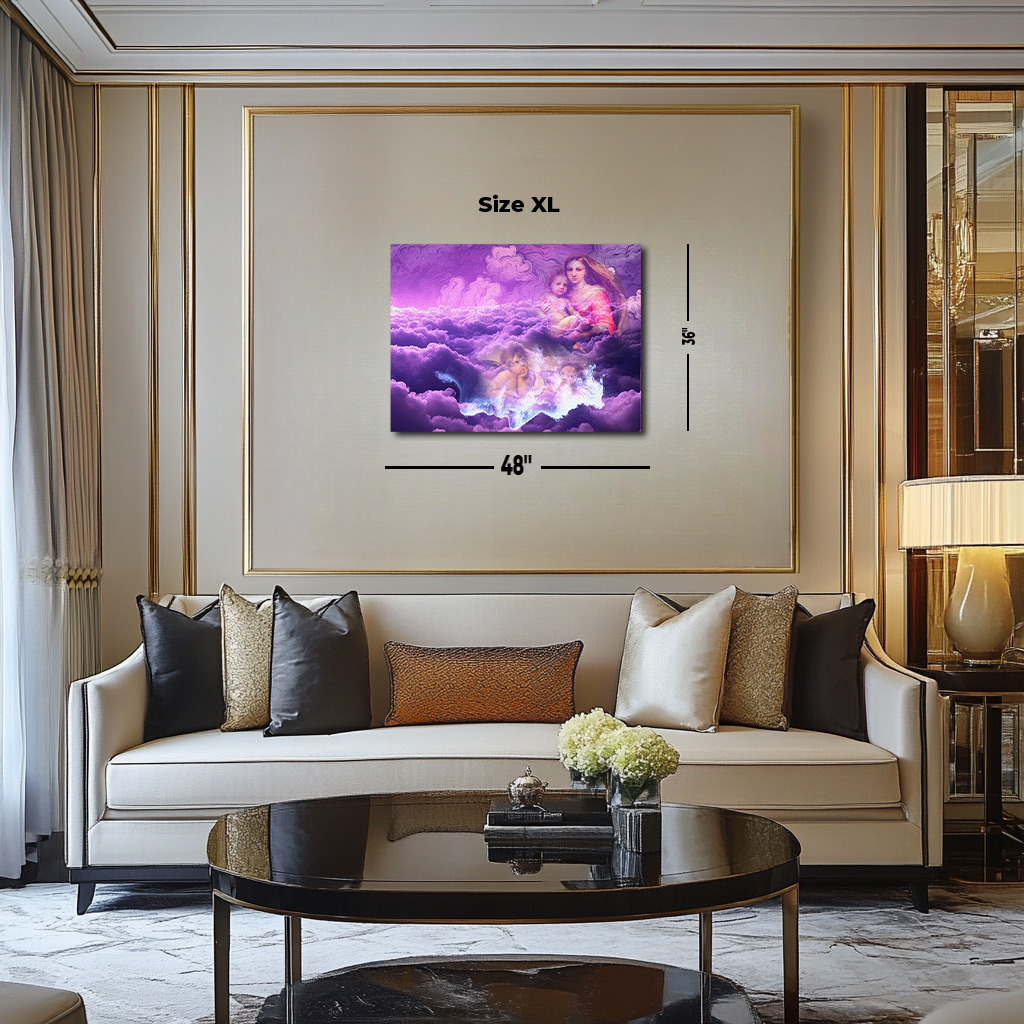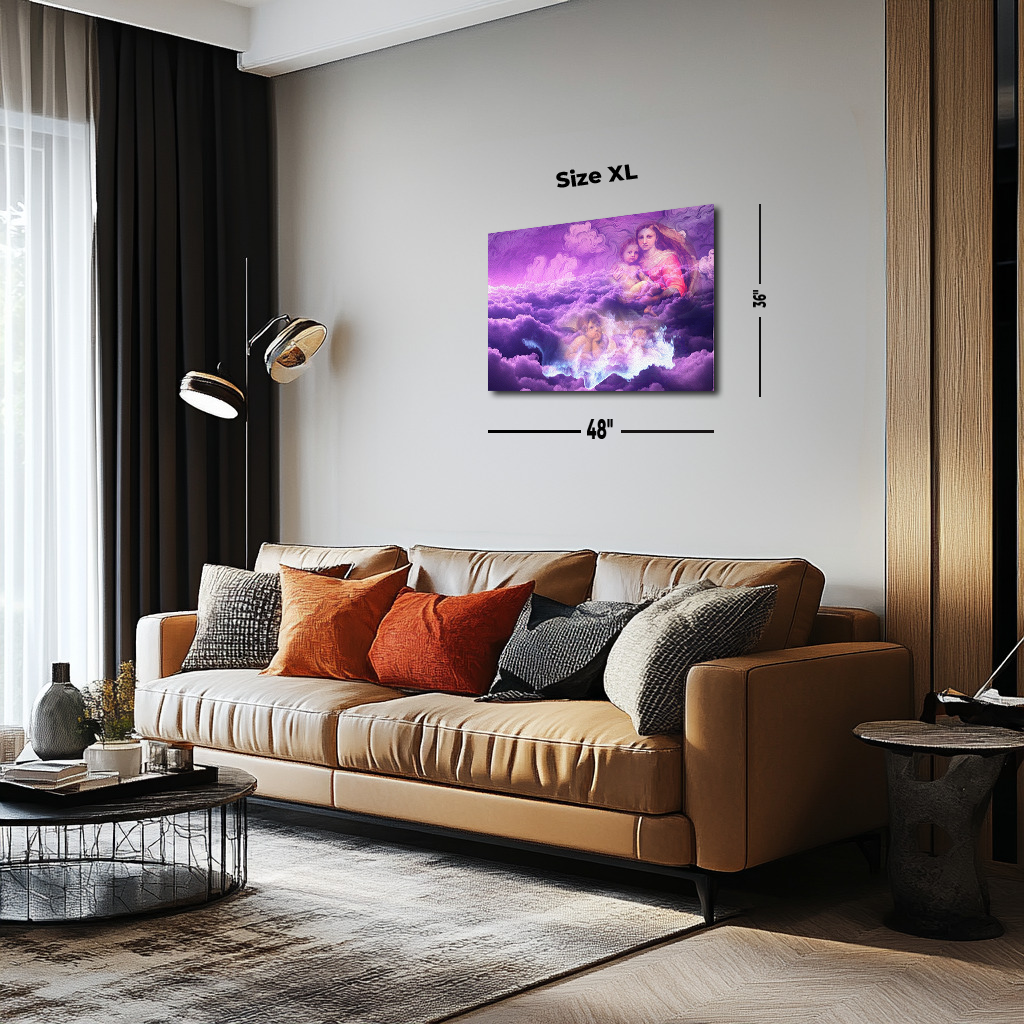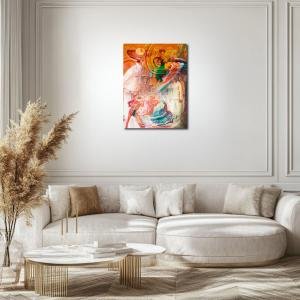Ethereal Divinity: A Dadaist Reimagination of Raphael’s Sistine Madonna
"Ethereal Divinity: A Dadaist Reimagination of Raphael’s Sistine Madonna" merges classical Renaissance grace with a surrealist, dreamlike aesthetic. Dominated by a vivid palette of purples, the artwork transforms the Madonna and Child into celestial figures surrounded by swirling clouds of lavender and gold. The cherubic angels blend seamlessly into the ethereal expanse, symbolizing innocence and the mystery of faith. This modern reinterpretation reframes Raphael’s masterpiece within the complexities of contemporary spirituality, inviting viewers to find divinity amidst abstraction and ambiguity. It is a harmonious collision of tradition and surrealism, bridging the gap between historical reverence and modern artistic innovation.
Please see Below for Details…
Hotline Order:
Mon - Fri: 07AM - 06PM
404-872-4663
The artwork, The Sistine Madonna Gemäldegalerie Alte Meister Dadaism , reinterprets Raphael Sanzio's masterpiece through a contemporary Dadaist lens, merging the divine purity of the Madonna with an ethereal, dream-like realm. Created in 1512–1513 and originally commissioned for the church of San Sisto in Piacenza, Raphael’s Sistine Madonna is one of the Renaissance's most iconic depictions of the Virgin Mary and the Christ Child. This reimagined version elevates the original to a surrealist plane, where clouds, colors, and divine imagery blend seamlessly into an otherworldly vision.
In the central composition, the Madonna holds the Christ Child with a serene grace that transcends time, her maternal bond unshaken even within this fantastical setting. Cherubic angels, resting at the base of the composition, appear as dreamlike apparitions, their forms blending with the undulating lavender and amethyst clouds that dominate the artwork. These clouds, meticulously detailed with soft swirls and wispy contours, create an infinite space, symbolizing the boundlessness of divine love and the mystery of the celestial realm.
The most striking element of this reimagined masterpiece is its use of color. A vivid palette of purples, ranging from deep plum to soft lavender, imbues the piece with an emotional depth that goes beyond traditional religious iconography. Purple, historically associated with royalty, spirituality, and mysticism, underscores the sacredness of the Madonna while simultaneously evoking a sense of introspection and emotional transcendence. Subtle hints of golden hues radiate around the figures, symbolizing divinity and enlightenment, while the soft interplay of light and shadow lends a sense of movement to the piece.
As the artist behind this modern interpretation, I sought to reframe Raphael’s masterpiece within the context of contemporary thought and emotion. While the Renaissance celebrated balance, harmony, and divine idealism, this reinterpretation introduces an element of surreal ambiguity. The clouds, with their surreal textures and endless expanse, reflect the complexity of faith in the modern age—an ever-changing, often obscured journey toward understanding. The cherubic figures, almost dissolving into the environment, represent the fragility of innocence in a world increasingly dominated by chaos and uncertainty.
The Dadaist influence is evident in the disjointed yet cohesive visual language. The piece disrupts the conventional narrative of the Madonna and Child, placing them in an environment that challenges the viewer’s perception of space and time. The clouds, traditionally a backdrop, become a central character in the narrative, engulfing and cradling the divine figures, suggesting a unity between the heavenly and the earthly realms.
This conceptual layering also reflects my personal exploration as an artist of the boundaries between reverence and abstraction. The inclusion of surreal elements—such as the clouds morphing into celestial forms—was intentional to invite viewers to contemplate the divine in unexpected places. The fusion of traditional Renaissance figures with modern, abstract elements creates a tension that mirrors the human experience of faith: grounded in tradition yet constantly evolving.
Through this artwork, I aimed to emphasize the timeless relevance of Raphael's original masterpiece. The Madonna’s gentle gaze and the Christ Child’s tender posture remind us of the enduring power of maternal love and divine grace. However, the abstract and surreal qualities of this reimagined piece ask the viewer to consider the ways in which the sacred manifests in the chaos of modern existence. This work is both a homage to Raphael and a meditation on the spiritual questions of our time.
Add your review
Your email address will not be published. Required fields are marked *
Please login to write review!
Looks like there are no reviews yet.










